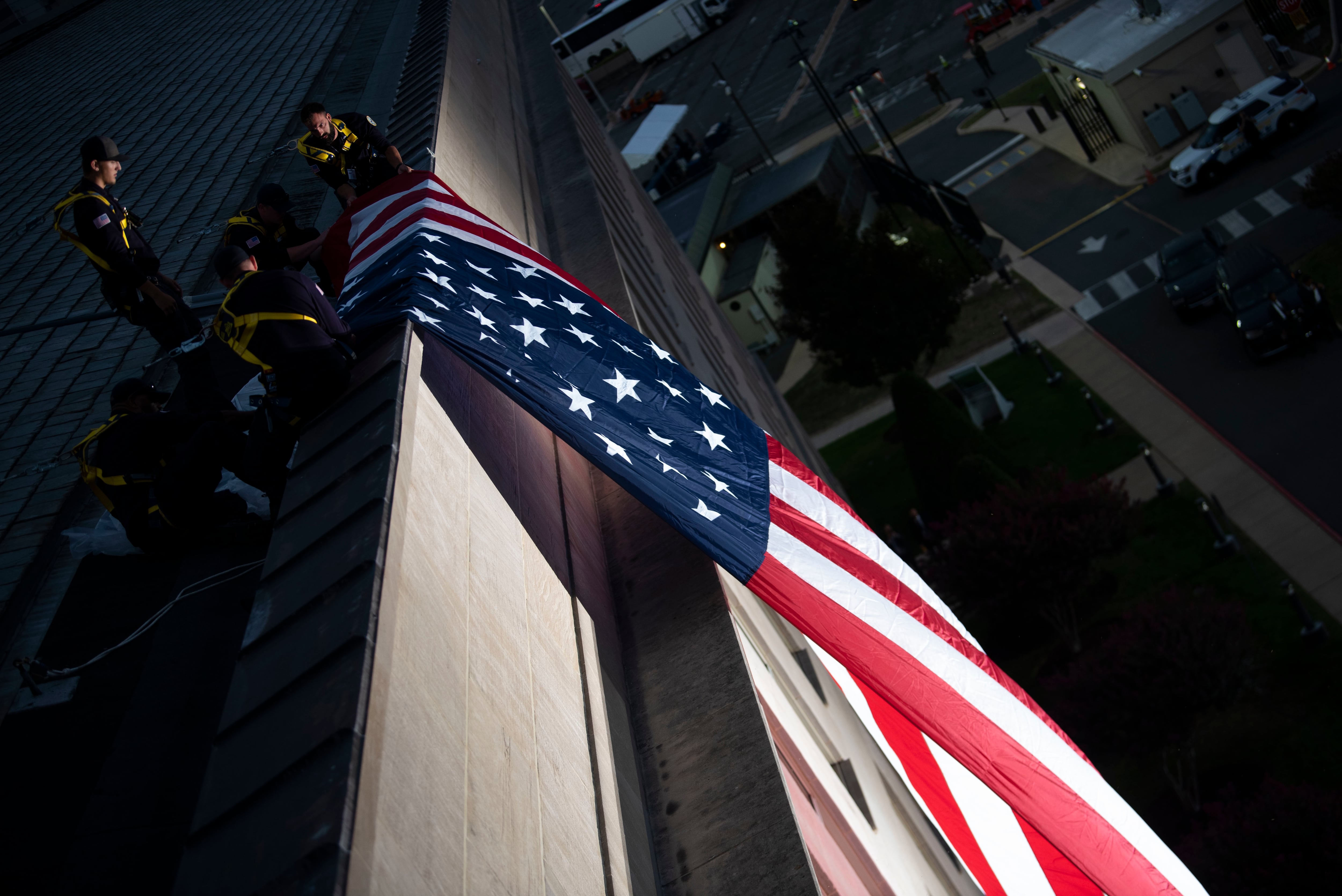Twenty years after a hijacked airplane crashed into the south side of the Pentagon, many people who lived through the horror of Sept. 11, 2001, are still coming into the building every day.
One of them is Deputy Defense Secretary Kathleen Hicks, who was working in the Office of the Secretary of Defense at the time. She recalled dropping her son at the childcare center on the north side before heading to her desk and getting to work, during an event for employees on Friday.
“From where I was, essentially on the other side of the building, the impact of that crash felt like a heavy object falling in the hallway, a series of loud noises, the ground shaking. We opened our suite door to try and understand what was happening, as anyone who was there day will remember our public address system did not work well,” she said. “So we didn’t know and we waited, wondered.”
With the Pentagon mostly teleworking, due to ongoing COVID-19 concerns, several hundred people gathered outside to commemorate the occasion.
The crash, which hit a section of the building housing mostly Army and Navy offices, killed 125 employees, including service members, civilians and contractors.
They “were taken in a moment, taken with almost 3,000 more in New York City and Shanksville, Pennsylvania, in an unprovoked attack directed not just against the American people, but against our nation’s guiding ideals of freedom, liberty, and the pursuit of happiness,” Air Force Gen. John Hyten, vice chairman of the Joint Chiefs of Staff, said during the event Friday.
RELATED

Beyond the 20-year anniversary, Sept. 11, 2021, also represents a bookend to the first front in the Global War on Terror: Afghanistan.
On Aug. 30, the last troops on the ground left, after a herculean effort to evacuate more than 120,000 civilians, including American citizens and Afghan allies.
Meghann Myers is the Pentagon bureau chief at Military Times. She covers operations, policy, personnel, leadership and other issues affecting service members.




